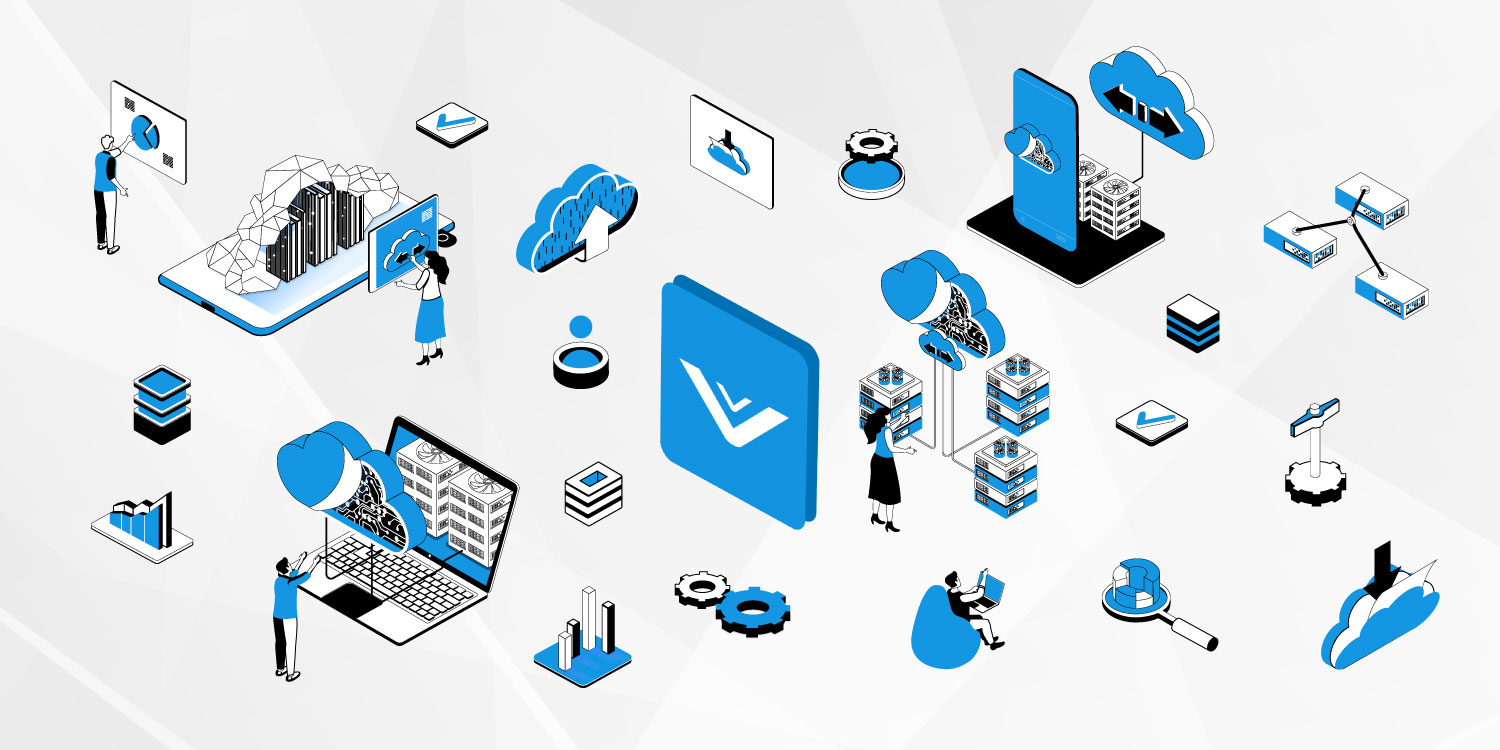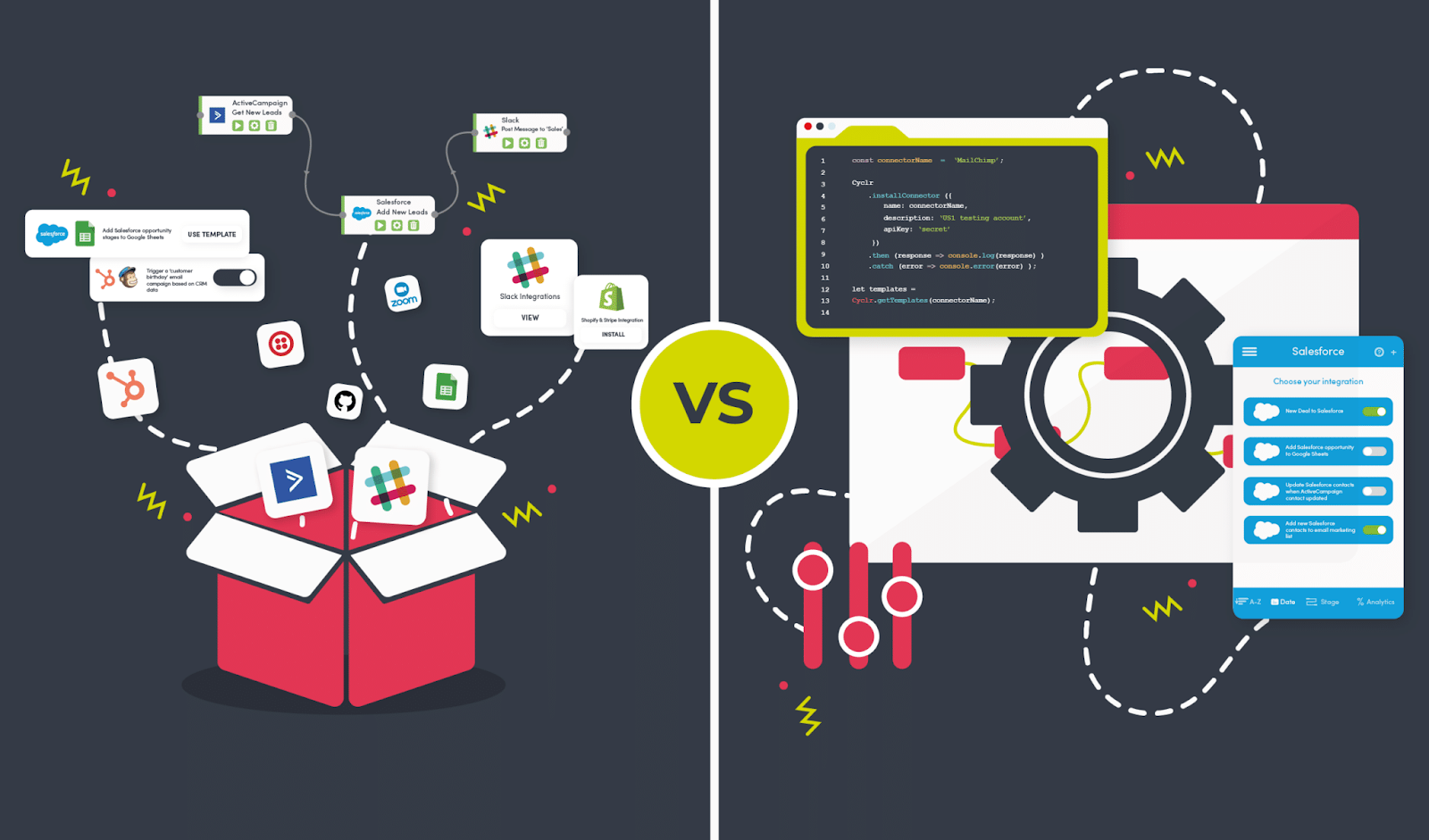Your technology ecosystem is an indispensable part of daily business operations. You already know that no single app or platform can comprehensively address all organizational needs. That’s where the technology ecosystem comes into play. Think of your technology ecosystem as the fundamental infrastructure of your business operations because it serves as the cornerstone upon which all activities rely.

In this post, we’ll walk you through everything you need to know about building a technology ecosystem. We’ll share information about how to create an optimal ecosystem for your business, plus technology ecosystem examples.
Table of Contents
- What is a technology ecosystem?
- How to Build the Best Software Ecosystem for Your Business
- How to Connect your Tech Ecosystem
What is a technology ecosystem?
The term “technology ecosystem” can mean multiple things. If you Google it, you’ll probably come across a variety of definitions. The term can describe the tech scene in a physical location, like London or San Francisco. Or, in the context of this article, a technology ecosystem is the collection of tech solutions a company uses to run its business, and how these solutions connect with each other. This is the definition we’ll be working with here.
The reason we call it an ecosystem — as opposed to just “collection of apps” or “app stack,” for example — is because the term “ecosystem” describes not only what tools you’re using, but also how they interact with one another. The term “ecosystem” was first used in the field of ecology to describe a community of living organisms, factors, and elements — such as plants, animals, soil, climate, etc. — and how every one of these elements are linked together.

That same principle can be applied to your technology ecosystem: The key is to figure out how all the elements in it work together. The most successful technology ecosystems are integrated in real time, enabling you to build more functionalities onto your core tools and expand its uses. You’re looking for tools that interact seamlessly — that know how to communicate. Ultimately, that communication translates to effective collaboration between different departments in your organization.
For example, let’s say you run an online pet supplies store. You sell things like pet food, treats, toys, beds, accessories, cat litter, dog harnesses, etc. You likely need an ecommerce tool to run your business, as well as a payment gateway to process customer payments, an accounting tool to keep track of your business finances, an email marketing app to send out newsletters, a CRM tool as a database for your customer data … and the list goes on. These tools are all part of your company’s technology ecosystem.
How to Build the Best Software Ecosystem for Your Business
The first step is to curate the apps you already have. Identify blockages, disconnects, and information silos that might be getting in the way of your current processes. Eliminate tools that aren’t working for you and replace them with more suitable apps. Software review websites like G2 Crowd and Capterra can help with this as they gather customer feedback on all the top business apps.
Next, identify processes that could be improved by implementing a new app and find the best option for you. Take into consideration your business size, industry, and characteristics. Make sure your new apps can connect to your existing tools, either natively or through third-party integration software.

If you plan on scaling up your business, make sure that your tools are flexible enough to cater to your needs as you grow, not just in the present. Select applications that can scale with you will save you the headache of migrating to yet another set of tools further down the road.
Here are a few indicators that a particular tool or application will be able to scale with you as your company grows:
- You can have a free trial of the tool to test out all of its features before you subscribe.
- There are testimonials or customer stories that reference scalability.
- The vendor offers a good starter plan with affordable pricing.
- There are packages that can suit small businesses as well as larger ones, with pricing and features fitting the needs of your organization.
- The app has more features gated behind extra fees, which you can unlock once you reach the next stage of growth in your business.
Having the right tools is an excellent starting point to create the best technology ecosystem for your business, but it doesn’t end there. Remember: In order for an ecosystem to be fully functional, every element in it needs to be connected. That’s why integrating your software ecosystem is just as important as having the right tools.
How to Connect Your Tech Ecosystem
Circling back to the example above, let’s say you’ve chosen all the best apps to run your online pet supplies store, and you’re happy with the tools in your software ecosystem. A lot of these apps can already talk to each other natively via in-app integrations. For example, it’s likely that your CRM offers an integration with Google Contacts.
But what if you need more?
For a lot of companies, making sure that tools are properly integrated is a big challenge. Most of their applications are not really connected, resulting in isolated bits of information.

That’s why you need integration software to bridge the gaps between your tools and make sure you’re working with a fully functional software ecosystem, where your tools play nicely together and talk to each other in real time.
If the idea of a fully integrated ecosystem sounds daunting to you, don’t worry — it's simpler than it sounds. Integration refers to the process of combining two (or more) pieces of software so that they’re working in tandem, and this can be achieved in a few different ways. In order to integrate your applications, you can use:
1. Native (or In-App) Integrations
Native integrations are offered by your software vendor, like an integration between CRM and a contact repository or an ecommerce platform and a payment gateway. These are just a few technology ecosystem examples, but the opportunities for native integrations are endless. Native integrations may be included in your subscription or be an additional product like HubSpot’s Operations Hub. Native integrations often serve the most common use cases, so they will likely cover the typical workflows users expect to have between apps.

Pro Tip: Take advantage of native integrations to maximize the value of your software subscriptions and simplify data transfer and collaboration across different applications.
2. Custom Integrations
Custom integrations will be tailor-made for your business needs, but they’re also typically very costly and time-consuming to build. Additionally, building custom integrations for all your unique needs isn’t a feasible option for businesses that don’t have employees with the expertise to do this — and maintaining software integrations is no piece of cake, either.
Let’s walk through technology ecosystem examples with custom integrations. Say you work for a publishing company and your content management system (CMS) was custom built. In this case, you may need your team to build a custom integration to integrate with traffic reporting tools. As you can tell, this is a hassle — which is why custom integrations aren’t typically a first-choice solution.

Pro Tip: Consider building custom integrations in-house if you have the necessary expertise and resources. However, keep in mind the potential costs and time investment associated with developing and maintaining custom integrations. Think of this as a last resort.
3. iPaaS Tools
Integration Platform as a Service (iPaaS) tools are third-party, cloud-based solutions that help integrate your business tools into a functioning technology ecosystem. This category includes apps like Zapier, which triggers actions from one app to the other one. Most iPaaS solutions offer extensive customization options, so you can tweak your connections until they’re doing exactly what you need them to do.
Pro Tip: iPaaS tools are best for businesses seeking a cloud-based solution that bridges the gaps between different tools and enables seamless data exchange and automation.
Your business needs are what matter most.
The best apps and integration for you won’t necessarily be the most popular, expensive, or comprehensive ones. Make sure to adjust your tech ecosystem until it fits you just right, and it will help you exceed your goals and boost your performance. With the right apps for you and the right integrations between them, you’ll be in the best position to run your business as smoothly as possible.









![What are ISVs? [Examples, Benefits, and More]](https://blog.hubspot.com/hubfs/ISV.png)

